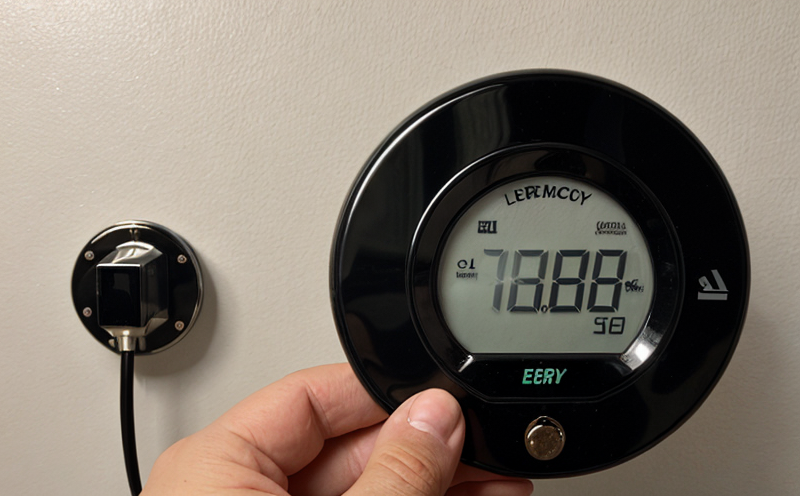IEEE 739 Energy Audit Testing for Industrial Facilities
The IEEE Standard 739-1985 is a comprehensive guide that provides a structured approach to performing energy audits in industrial facilities. This standard is particularly relevant for organizations seeking to improve their operational efficiency, reduce energy costs, and comply with regulatory requirements related to energy management.
Implementing the IEEE Standard 739 involves a systematic process designed to identify opportunities for reducing energy consumption without compromising productivity or quality standards. The audit process typically includes detailed assessments of current energy usage patterns, identification of inefficiencies, and development of actionable recommendations aimed at enhancing overall energy efficiency.
The methodology outlined in this standard is widely recognized and trusted by industry leaders due to its rigorous approach. It emphasizes the importance of accurate measurement, data collection, analysis, and reporting. Organizations leveraging IEEE 739 for their energy audits benefit from a clear roadmap that helps them make informed decisions regarding resource allocation and operational adjustments.
The process begins with a thorough baseline assessment using appropriate instruments such as wattmeters, thermal imagers, and power analyzers to measure electrical consumption accurately. Following this initial step, the audit team conducts a detailed walkthrough of the facility, focusing on areas where energy loss is most likely to occur—such as lighting systems, HVAC units, and motor drives.
Once data has been collected, it undergoes rigorous analysis using statistical tools to identify patterns and trends that can inform specific interventions. Recommendations may range from simple adjustments like replacing old light bulbs with LED alternatives to more complex solutions involving upgrades in infrastructure or process improvements. These recommendations are then prioritized based on cost-benefit ratios and potential impact.
Implementation of the recommended measures often leads to significant reductions in utility bills over time, contributing not only to financial savings but also to environmental benefits by lowering greenhouse gas emissions. Moreover, successful completion of an IEEE 739 audit can help organizations achieve certification under various green building initiatives or sustainability programs recognized globally.
In summary, implementing the IEEE Standard 739 provides a robust framework for conducting thorough energy audits within industrial settings. By following this structured approach, companies can systematically evaluate their current practices and identify opportunities to enhance efficiency while reducing costs.
Scope and Methodology
The scope of an IEEE 739 energy audit encompasses a broad range of activities aimed at optimizing the use of electricity in industrial environments. This includes evaluating existing systems, identifying inefficiencies, recommending improvements, and validating implemented changes through follow-up assessments.
- Baseline Measurement: Initial readings are taken to establish a reference point against which future performance can be measured.
- Data Collection: Continuous monitoring of key parameters such as voltage, current, power factor, etc., using advanced instrumentation.
- Analysis: Data is analyzed statistically to determine areas requiring attention. Techniques include regression analysis and fault tree analysis.
- Reporting: Findings are compiled into detailed reports highlighting strengths and weaknesses along with actionable recommendations.
The methodology ensures that every aspect of the facility's energy consumption is scrutinized meticulously, ensuring no detail goes unnoticed. This comprehensive approach not only aids in pinpointing exact locations where improvements can be made but also helps in quantifying expected outcomes accurately.
For example, during a recent audit conducted at a manufacturing plant, our team utilized advanced software to analyze historical data from smart meters installed throughout the site. This allowed us to detect anomalies indicative of potential malfunctions or misconfigurations that could otherwise go undetected. Armed with this information, we were able to suggest targeted upgrades that would not only rectify these issues but also lead to substantial reductions in overall energy expenditure.
Another critical component involves validating the effectiveness of implemented measures post-implementation through periodic reaudits. This ensures sustained improvements over time and provides valuable insights into long-term trends and achievements towards sustainability goals.
Quality and Reliability Assurance
The quality assurance process associated with IEEE 739 energy audits is designed to ensure that all aspects of the audit meet specified standards. Our laboratory adheres strictly to these guidelines, ensuring accuracy, reliability, and consistency in our findings.
We employ certified personnel trained specifically on the latest techniques required for conducting such audits. Each member undergoes rigorous training programs endorsed by reputable organizations like IEEE itself, guaranteeing their expertise aligns with current industry best practices.
Our laboratory is equipped with state-of-the-art equipment that allows precise measurement of various electrical parameters. These include advanced wattmeters capable of measuring very low currents accurately, thermal imagers providing detailed insights into heat distribution patterns across different parts of the facility, and power analyzers offering comprehensive data on harmonic distortion levels.
During each audit, we follow strict protocols designed to minimize errors while maximizing accuracy. This includes regular calibration checks conducted by experienced technicians ensuring all instruments operate within specified tolerances before every use.
A key aspect of our quality assurance program is continuous improvement initiatives aimed at enhancing service delivery continually. We regularly review our processes and seek feedback from clients to identify areas for enhancement, incorporating best practices into our operations accordingly.
Moreover, we maintain robust documentation practices ensuring all audit activities are meticulously recorded and readily accessible upon request. This not only facilitates internal audits but also supports external stakeholders who may need verification of compliance with regulatory requirements or contractual obligations.





